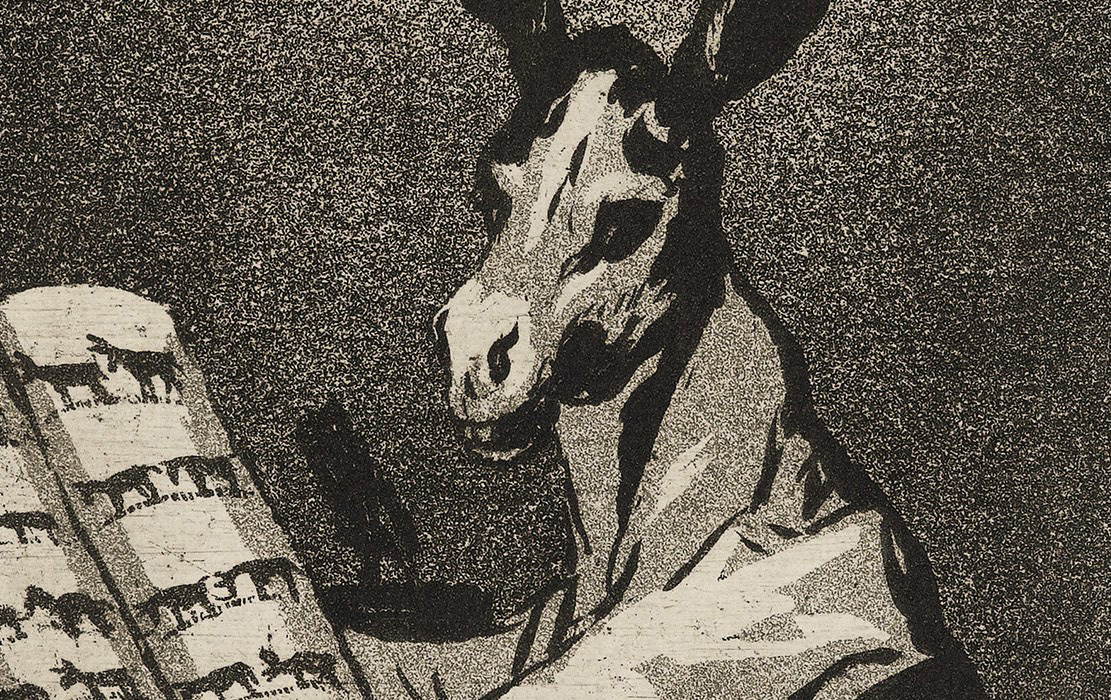
Many look at historic art as a very serious genre, typified by the large, intimidating, grandiose museum structures strewn across every major city. We think of endless walls adorned with bigger than life Renaissance paintings depicting glorified versions of historic events and biblical stories. Every work of art hangs in a perfectly aligned, scientifically thought out order within the safe borders of their intensely intricate golden frames. “Historic Art” brings to mind Impressionist paintings characterized by pastel colors and ephemeral brushstrokes. Or it brings to mind the Italian Renaissance, an era that, for so many, can be broken down to a singular image by Leonardo— the Mona Lisa. Therefore, when we think of the art that hangs within our National Gallery, we oft fail to think of the funny and silly images that pop up somewhat randomly within the collection. [cover photo: Francisco José de Goya y Lucientes]
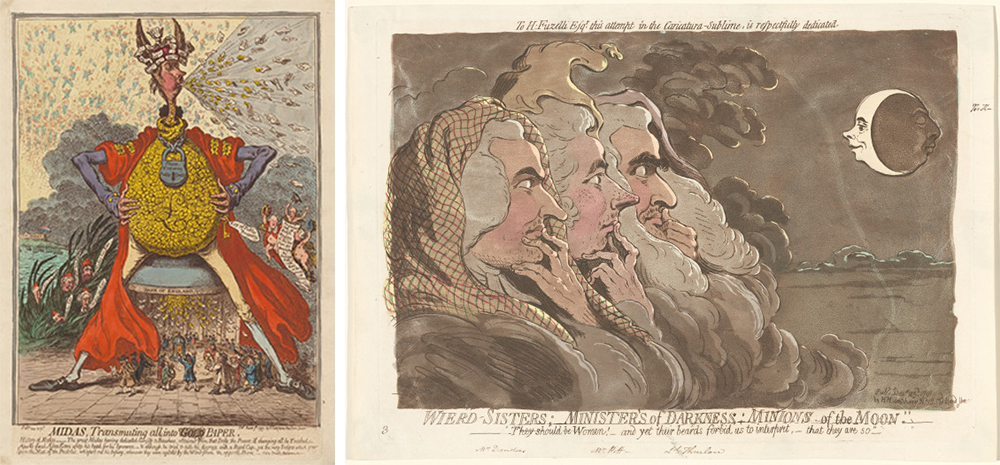 James Gillray – Midas, Transmuting All into Paper (Left),James Gillray – Weird-Sisters; Ministers of Darkness; Minions of the Moon (Right)
James Gillray – Midas, Transmuting All into Paper (Left),James Gillray – Weird-Sisters; Ministers of Darkness; Minions of the Moon (Right)
For curators Jonathan Bober, Andrew W. Mellon (senior curator of prints and drawings), Judith Brodie (curator and head of the department of American and modern prints and drawings), and Stacey Sell (associate curator, department of old master drawings), finding a laugh and light heartedness in viewing art became the fundamental ideal for their new exhibit “Sense of Humor” at the National Gallery in Washington D.C., on exhibit from July 15 2018- January 6 2019. The new exhibit aims to point out the deliberate jabs and jokes clearly illustrated by historic artists regarding contemporary tensions ranging from politics to social life. Among the many drawings, paintings and prints within the collection are pieces by artists famous for art with less hilarity such as Goya and William Hogarth as well as others like Daumier who are known for their heavily satirical works.
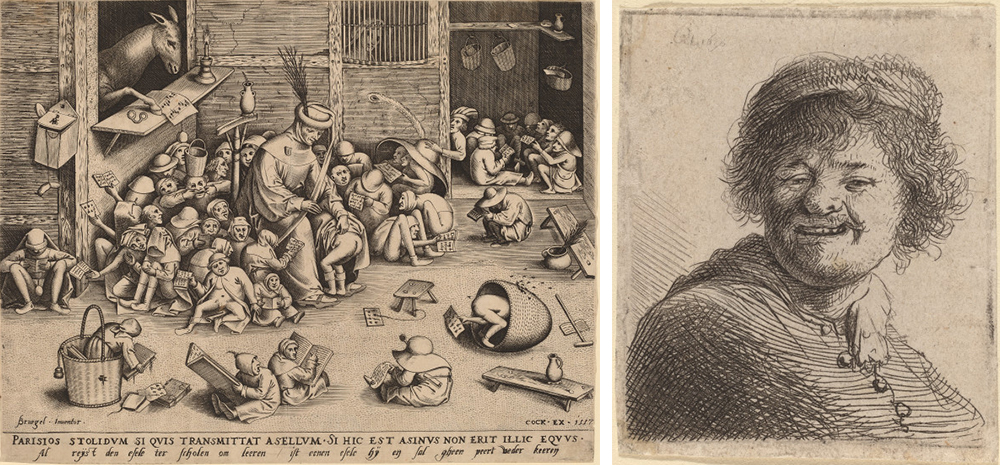 Pieter van der Heyden – The Ass at School (Left), Rembrandt van Rijn – Self-Portrait in a Cap: Laughing (Right)
Pieter van der Heyden – The Ass at School (Left), Rembrandt van Rijn – Self-Portrait in a Cap: Laughing (Right)
In Midas, Transmuting All into Paper (1797) James Gillray utilizes the ancient Greek myth of King Midas’ greed and desire for gold and utilizes it to comment on the greed provided through the Bank of England. In Weird Sisters Henry Fuseli employs Macbeth’s Three Witches and replaces them with members of court who look wearily at an unstable King George III. These and more prove how art was used to comment on social and political disruption.
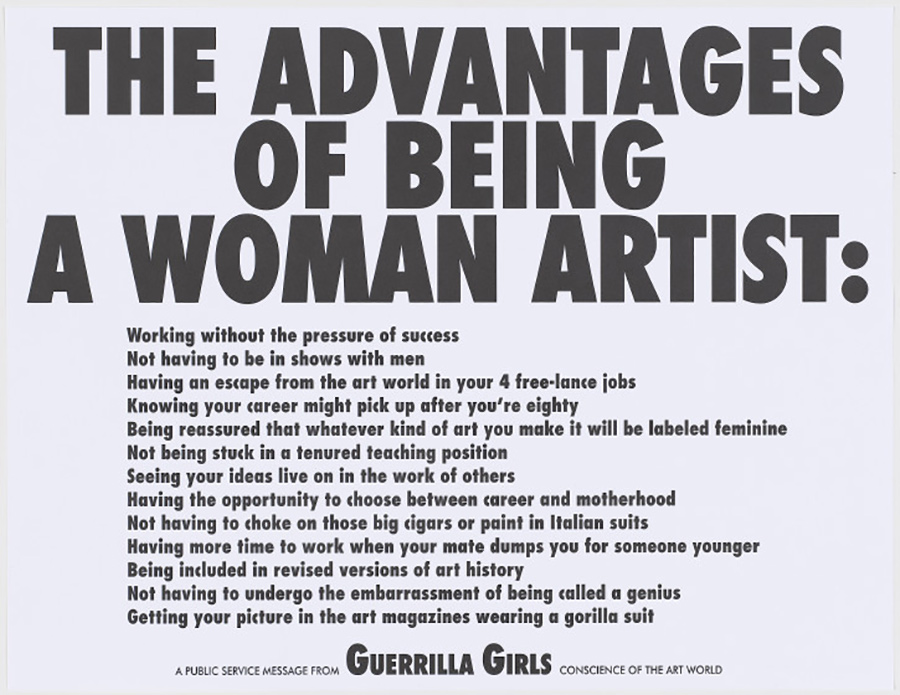 Guerrilla Girls – The Advantages of Being a Woman Artist
Guerrilla Girls – The Advantages of Being a Woman Artist
We find that it is not unusual to use humor as a means of deterring tension around a difficult topic. Humor is a vessel by which one can successfully give an opinion about and bring attention to a certain social or political topic without overtly offending anyone. In an era where politics are heavy and social tensions are complicated, the “Sense of Humor” collection provides a light reminder that we are merely human and looking for a laugh can be a nice method of refreshing ourselves from the trials of today.
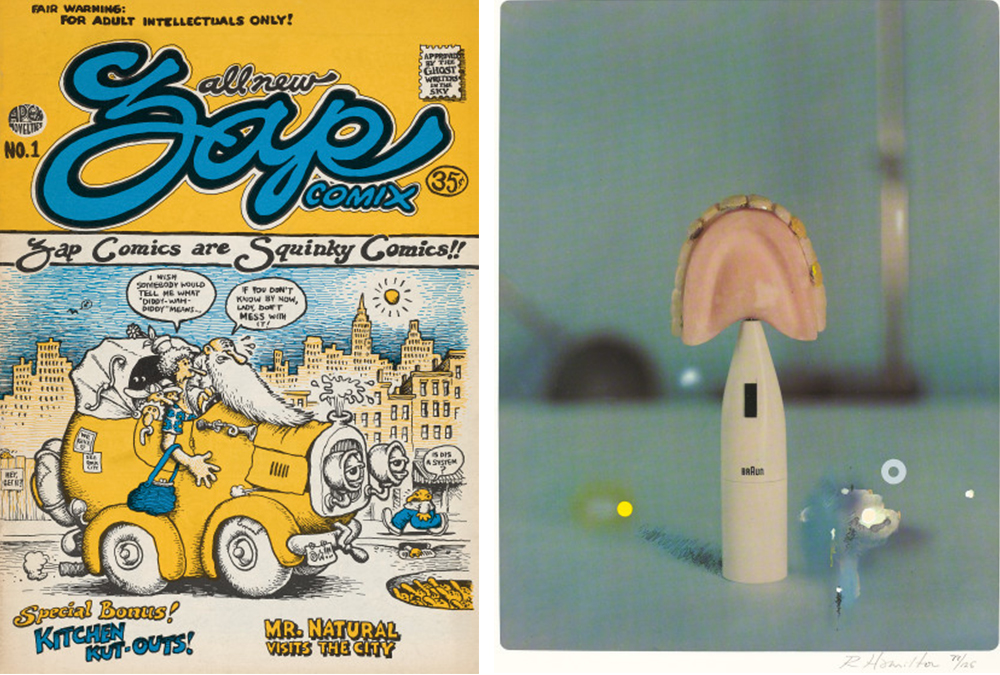 Robert Crumb – Zap, no. 1 (Left), Richard Hamilton – The critic laughs (Right)
Robert Crumb – Zap, no. 1 (Left), Richard Hamilton – The critic laughs (Right)
On a slightly cheesy note, the collection stands as a healthy reminder that art historically and thus today can and should be used as a method of restoring happiness and laughter into people’s lives. Art and essentially business overall does not have to be a methodically serious and dull matter but rather, we can allow for humor and art to provide both ourselves, and, as businesses, our customers, a sense of positivity.


